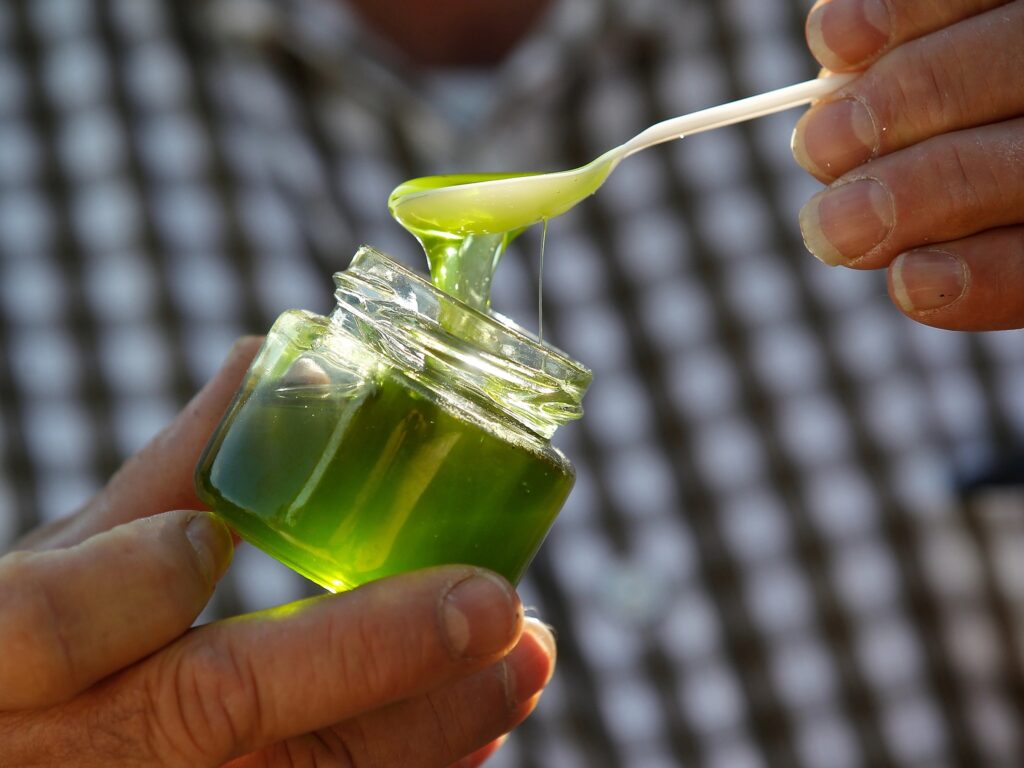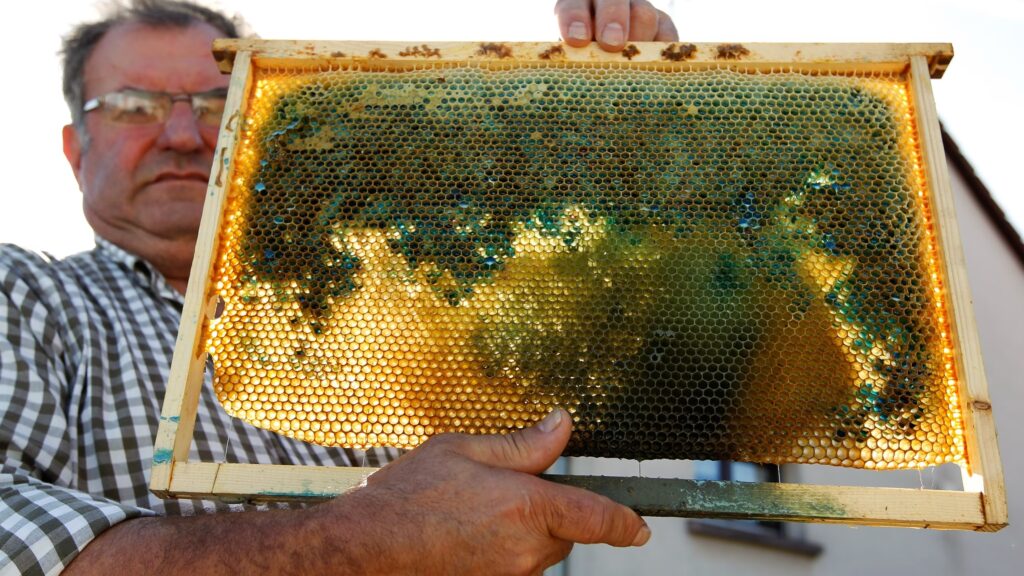
Bees at a cluster of apiaries in northeastern France have been producing honey in strange shades of blue and green, alarming their keepers, who now believe the cause is residue from M&M’s candy containers processed at a nearby biogas plant.
Since August, beekeepers around the town of Ribeauville in the region of Alsace have seen bees returning to their hives carrying unidentified colorful substances that have turned their honey unnatural shades.

Mystified, the beekeepers embarked on an investigation and discovered that a biogas plant 4 km (2.5 miles) away has been processing waste from a Mars plant producing M&M’s, bite-sized candies in bright red, blue, green, yellow and brown shells.
Asked about the issue, Mars had no immediate comment.
The unsellable honey is a new headache for around a dozen affected beekeepers already dealing with high bee mortality rates and dwindling honey supplies following a harsh winter, said Alain Frieh, president of the apiculturists’ union.
Agrivalor, the company operating the biogas plant, said it had tried to address the problem after being notified of it by the beekeepers.

“We discovered the problem at the same time they did. We quickly put in place a procedure to stop it,” Philippe Meinrad, co-manager of Agrivalor, told Reuters.
He said the company had cleaned its containers and incoming waste would now be stored in a covered hall.
Mars operates a chocolate factory near Strasbourg, around 100 km (62 miles) away from the affected apiaries.
Bee numbers have been rapidly declining around the world in the last few years and the French government has banned a widely used pesticide, Cruiser OSR, that one study has linked to high mortality rates.

France is one of the largest producers of honey within the European Union, producing some 18,330 tonnes annually, according to a recent audit conducted for national farm agency FranceAgriMer.
The M&M’s-infused honey, according to union head Frieh, may taste like honey, but the comparison ends there.
Ribeauville is best known for its vineyards and is located on a scenic wine route southwest of Strasbourg. Aside from winemakers, Alsace has about 2,400 beekeepers who care for 35,000 colonies and produce about 1,000 tonnes of honey per year, according to the region’s chamber of agriculture.

“It’s not honey for me. It’s not for sale.”

The colors are pretty cool I would buy blue and/or green honey.
I’d do a PR blitz and make the “extra special” honey sellable at an even higher price ! !
If the honey is not harmful to consume, I would buy it. It is pretty. Then again, maybe this is why the bees are not thriving in this area?